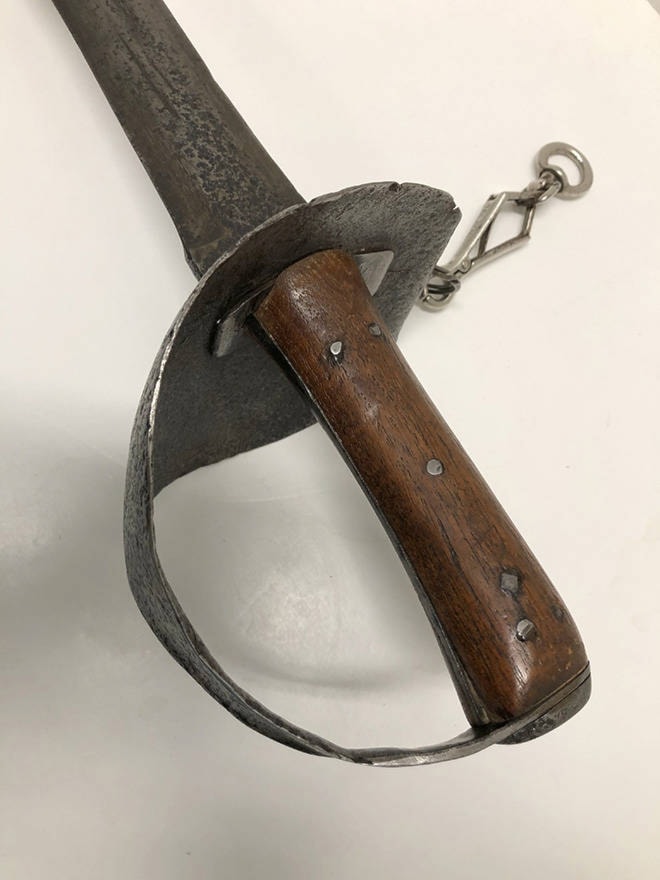Elida Peers | Contributed
This boarding sword, or cutlass, given to the museum by George Aitken Jr. when he moved from Sooke in 1986, is an example of what an important and interwoven role many families have played in our province’s history.
In his youth, George Aitken’s adventurous spirit had taken him to the then-remote Cariboo-Chilcotin cowboy country west of Williams Lake.
Readers who enjoyed reading author and rancher Rich Hobson’s books about Grass Beyond the Mountains may recall seeing George Aitken mentioned as one of the hands who rode with the ranchers’ legendary cattle drives in the 1940s and 1950s.
Back in Sooke from his ranch hand days, George Aitken found this weapon in 1956 when, hiking up the Sooke River, he noticed it wedged in a rock crevice. The sword’s blade is hand-forged steel, with a handmade oak hilt.
When the sword was brought to us, we consulted with experts who reported the weapon could have been either British or Spanish.
These weapons were used in hand-to-hand combat between vessels at sea, and logically could have been on board when Spain’s Quimper explored the inlet in 1790, or when the Royal Navy’s Capt. Henry Kellett surveyed the harbour in 1846.
George’s dad, George Aitken Sr., chief geographer for B.C., retired to a home he built on Sooke’s waterfront, on what is now Belvista, but was originally the main road through our village. Still standing, this house is immediately east of the Coopers Cove Oyster Farm enterprise.
George Aitken Sr.’s wife Melba also played a role in history, as she, together with Joyce Wilkinson, wife of the principal of Milne’s Landing High school, initiated the first brief history of Sooke in 1952, when it was noted the population was 1,500.
The section of land the Aitkens bought, running from the waterfront back as far as DeMamiel Stream, had once been part of the holdings of pioneer William Bell Charters.
The Second World War was followed by development and subdivisions, and after the passing of George Aitken Sr. this property was offered for sale. In 1972, the land was purchased by the forward-thinking Sooke Community Association
It may be a surprise to residents today to know that in 1974 the Sooke Community Association donated the land on which the Sooke arena was built to the Sooke Electoral Area Parks and Recreation Commission (SEAPARC) for the token price of $1, when Ron Dumont was the regional director.
This gift was followed in 1976 by the community association’s donation of the land that houses the museum, which was built by the Sooke Lions Club.
•••
Elida Peers is the historian of the Sooke Region Museum.
